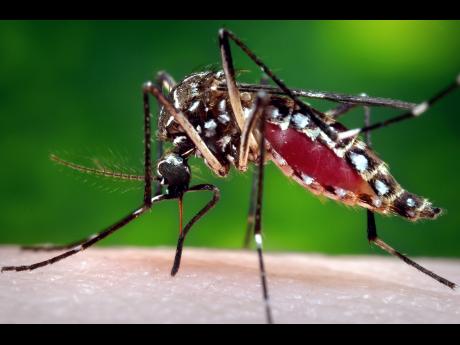Zika, women and choices
According to the World Health Organization (WHO), the Zika virus "is now spreading explosively" in the Americas, and it has been estimated that between three and four million people will be infected in the region over a 12-month period. The organisation announced that it will be convening an emergency committee today, February 1, 2016, to decide if the Zika outbreak should be declared an international health emergency.
The vast majority, about 80 per cent, of those infected with the Zika virus have no symptoms, and when symptoms do occur, they are usually mild, such as a fever, rash, joint pain or conjunctivitis (pinkeye), and only last for a few days. But more severe complications can occur, and it has been reported that there has been an increase in the incidence of Guillain-Barré syndrome, a rare autoimmune disorder that can lead to temporary but life-threatening paralysis, in countries where there are Zika outbreaks.
However, what has attracted the most attention during the current spread of the virus is the association of infections and an increased incidence in microcephaly in Brazil, the epicentre of the present outbreak. Microcephaly refers to a condition in which there is abnormal smallness of the head of a fetus or newborn. It is associated with incomplete brain development and decreased lifespan, and newborns who survive are prone to chronic complications such as epileptic seizures and dysfunctional motor skills.
In 2014, the year Zika is believed to have arrived in Brazil, the country recorded under 150 microcephaly cases. But since October 2015, the country has reported more than 4,000 suspected cases and the deaths of 70 babies.
Many persons are asking why, 69 years after the Zika virus was discovered, are we now hearing about an association between the microorganism and this devastating congenital neurological condition.
Experts in the field of mosquito-borne diseases theorise that microcephaly may not have been linked with Zika before because most previous outbreaks were not large enough to identify it. Indeed, the present outbreak in Brazil is the largest since the virus was discovered. When researchers reviewed data from an outbreak in French Polynesia that occurred in 2013 and 2014, they did, in fact, find an increase in cases of microcephaly in the area where the outbreak occurred.
Officials are, however, cautious about declaring that there is a definite cause and effect relationship. The director general of WHO, Margaret Chan, said that although a causal relationship has not been proven, it is “strongly suspected”, and a top official from the US Centers for Disease Control and Prevention (CDC) recently stated that to solidify the connections between the two conditions, researchers must study the documented microcephaly cases, the case histories of pregnant women and conduct case-control studies of babies born in affected areas such to get further insights.
In the meantime, the CDC has advised pregnant women against travelling to countries where Zika is circulating, and some countries - Brazil, El Salvador, Colombia, Ecuador and Jamaica - have advised women to delay pregnancy, if possible, until the risk of infection has subsided.
For women to delay pregnancy, however, is easier said than done. Based on observations in Brazil, the advice makes sense and is in their best interest, but this will be a difficult time for many women in the Americas. The utilisation of contraceptive practices has not been integrated into the cultures of many societies in the region.
There are an estimated 1.2 million unintended pregnancies just among adolescents in Latin America and the Caribbean annually, and nearly half of sexually active women in the region have an unmet need for contraception. Also, the strong presence of the Roman Catholicism in Latin America, with its concomitant disdain for contraception, is also a barrier.
And if pregnancy does occur, and a microcephalic fetus is discovered, detection is often more than halfway into the pregnancy, when termination is more risky and traumatic, and in some countries such as El Salvador, illegal even in the case of fetal deformity.
Also, when a woman who is in her late 30s or early 40s and has a history of recurrent pregnancy loss or infertility is told to delay pregnancy until she is about one year older, and her fertility possibly compromised by age or chronic illness, the psychological burden can be appreciable.
Women in the Americas are now faced with these dilemmas. We must be supportive to them, and provide encouragement to those who choose to defer pregnancy as well as those who, after weighing the pros and the cons, decide to proceed with pregnancy attempts.
And men, remember that if procreation is not your goal, you can pinch, leave an inch and roll.
-Michael Abrahams is a gynaecologist and obstetrician, comedian and poet. Email feedback to columns@gleanerjm.com and michabe_1999@hotmail.com, or tweet @mikeyabrahams.


